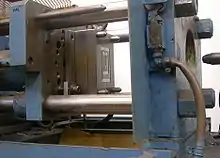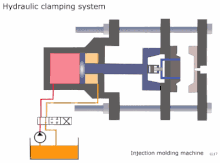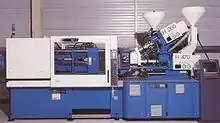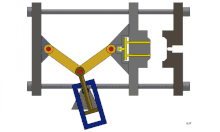The clamping units are used to keep the mold shut against the forces developed when injection pressure pushes plastic into the closed mold. Therefore, the amount of clamp force must be at least equal to the amount of injection force.
The machine sizes are determined by the clamping tonnage forces.
The rule of thumb are the larger clamping forces, the larger the machines sizes.
Table below shows the guideline between clamp size (in term of clamping force) and shot size (in term of weight)
The clamping forces are needed to be controlled so that the clamping force are not too little or too much.
If too little, the mold will not be able to stay closed when materials is injected into cavity which causes either flashes or incomplete mould/shots.
If too much, the mold will sustain severe damage which costs large amount of money for repair.
| Clamp Size (kN) | Shot weight (g) |
|---|---|
| 89 | 14.2 |
| 222.5 | 56.7 |
| 445 | 113.4 |
| 890 | 226.8 |
| 1780 | 453.6 |
| 2225 | 567 |
| 2670 | 851 |
| 4005 | 1701 |
| 6675 | 3402 |
| 8900 | 5670 |
| 17800 | 12757 |
| 35600 | 25515 |
There are two types of clamping systems :
Hydraulic clamps
The advantage of hydraulic clamp system is that the clamp pressure can be regulated over a wide range (E.g: From 500KN up to 25000KN) . This allows the proper clamp tonnage to be used for the specific job and minimizes the amount of energy expended.


Toggle clamps
The advantage of the mechanical toggle clamp system is that once toggle mechanism is locked in place, it is virtually impossible to blow the mold open even if injection pressures are beyond those required. Noted that this may caused the wear and tear to parts should it be left prolonged in this stage.

